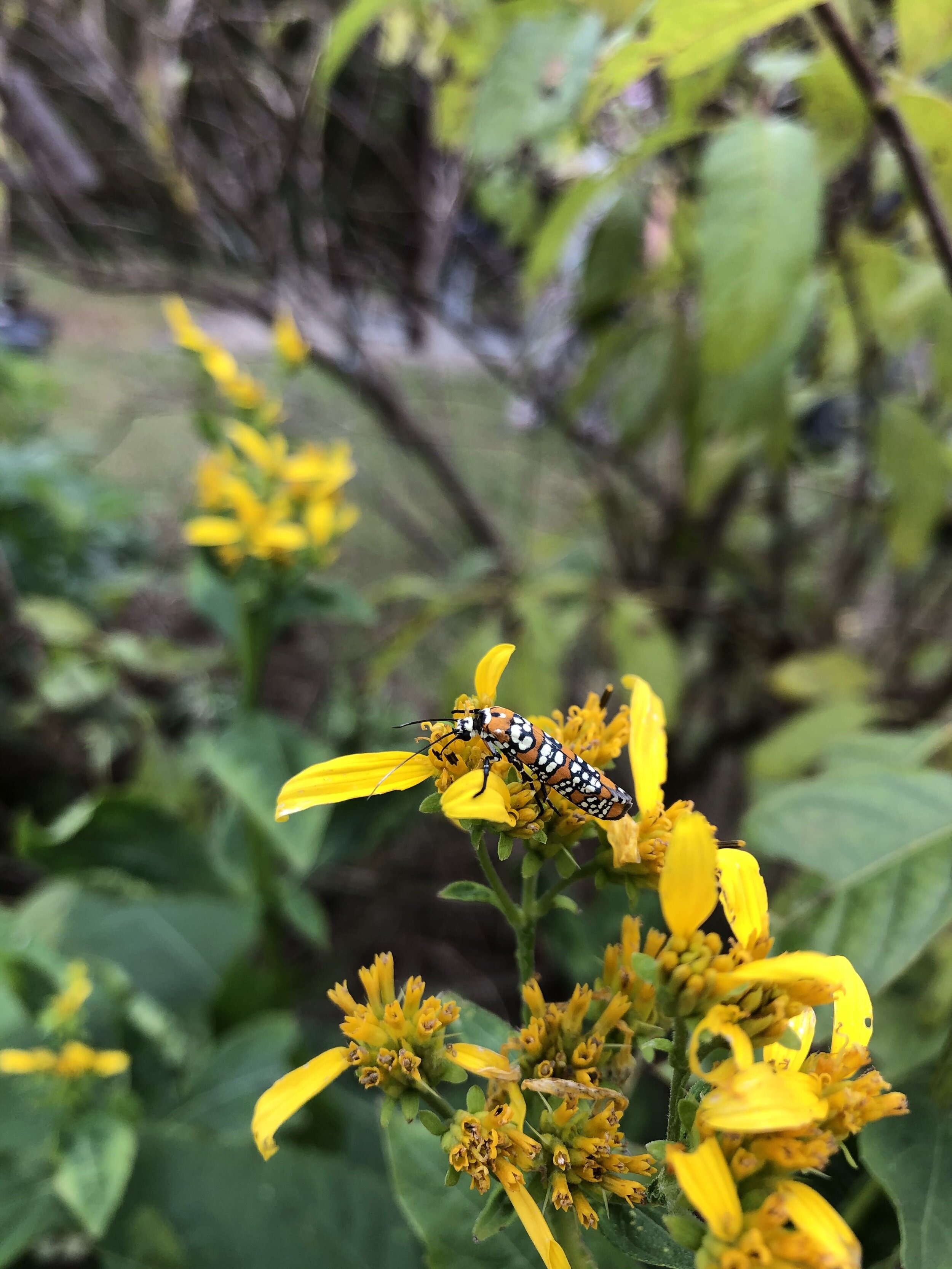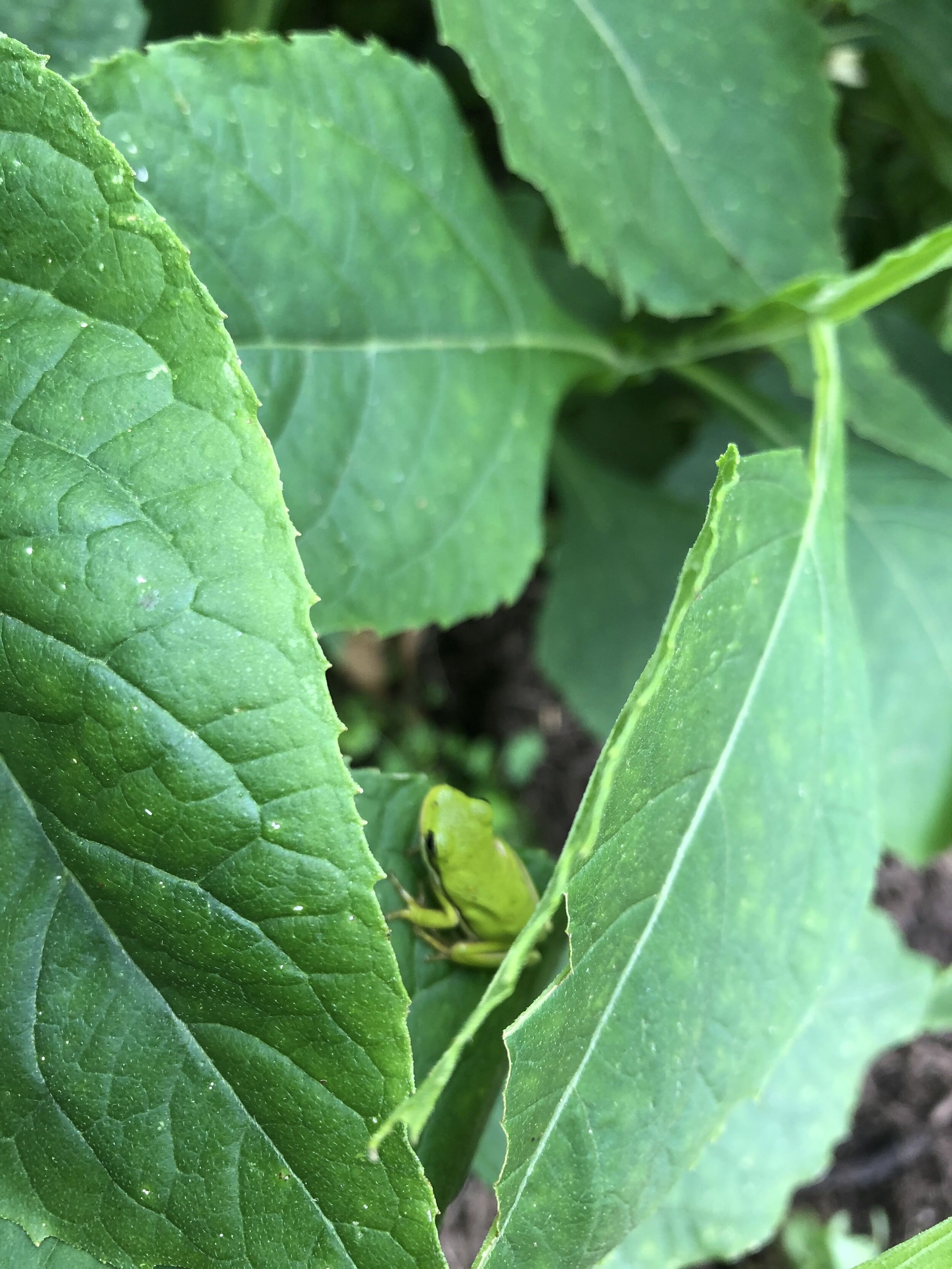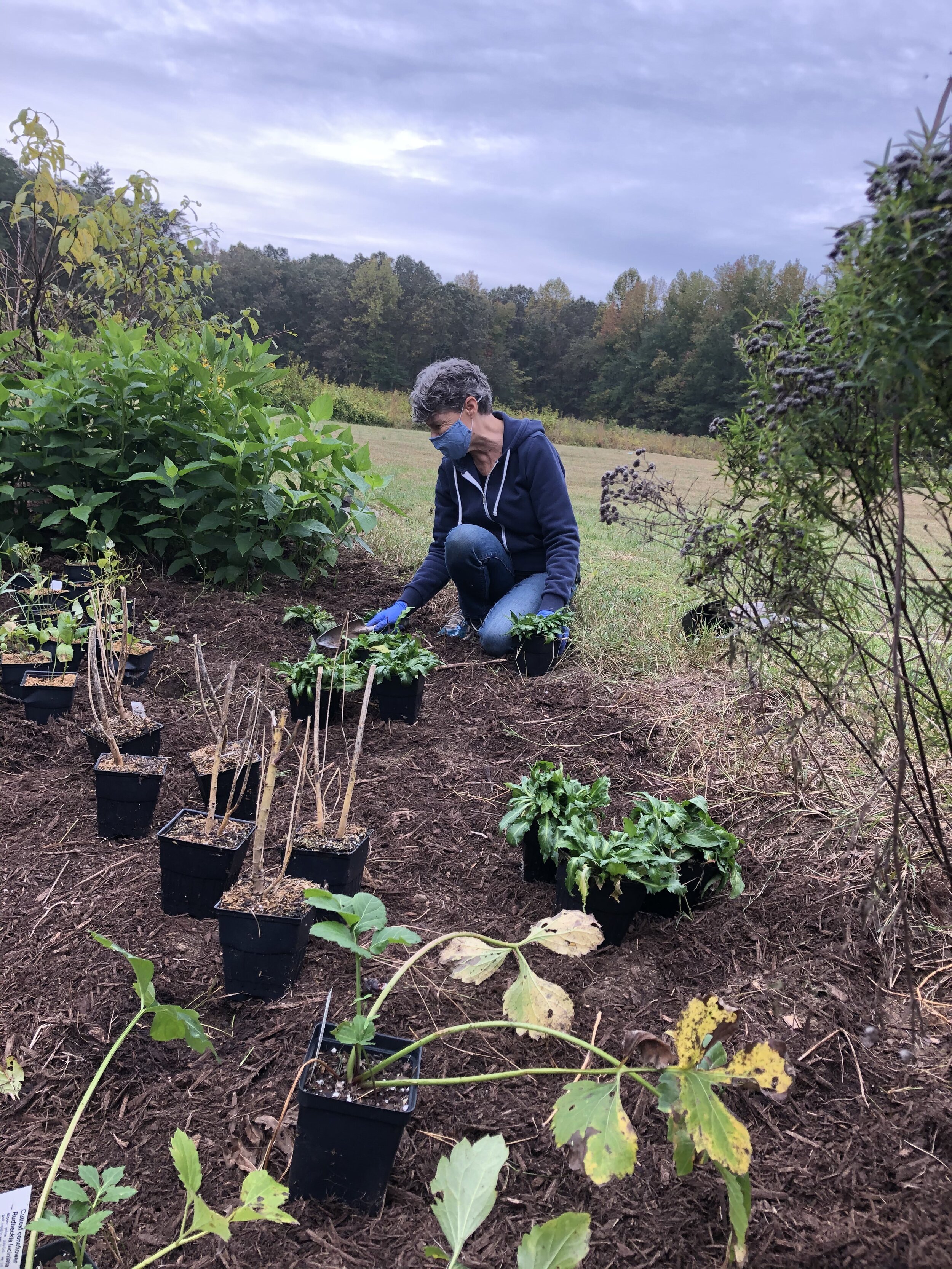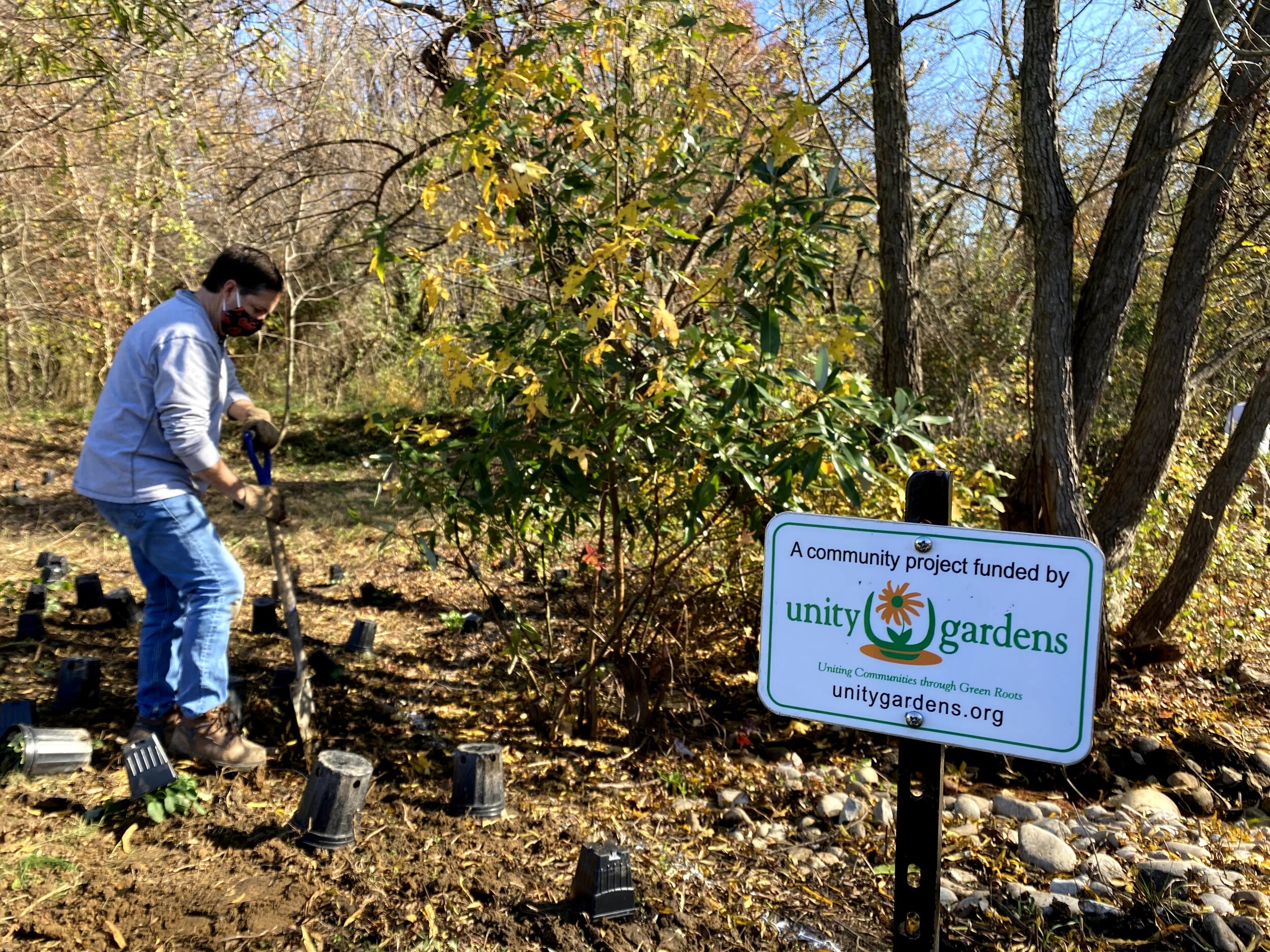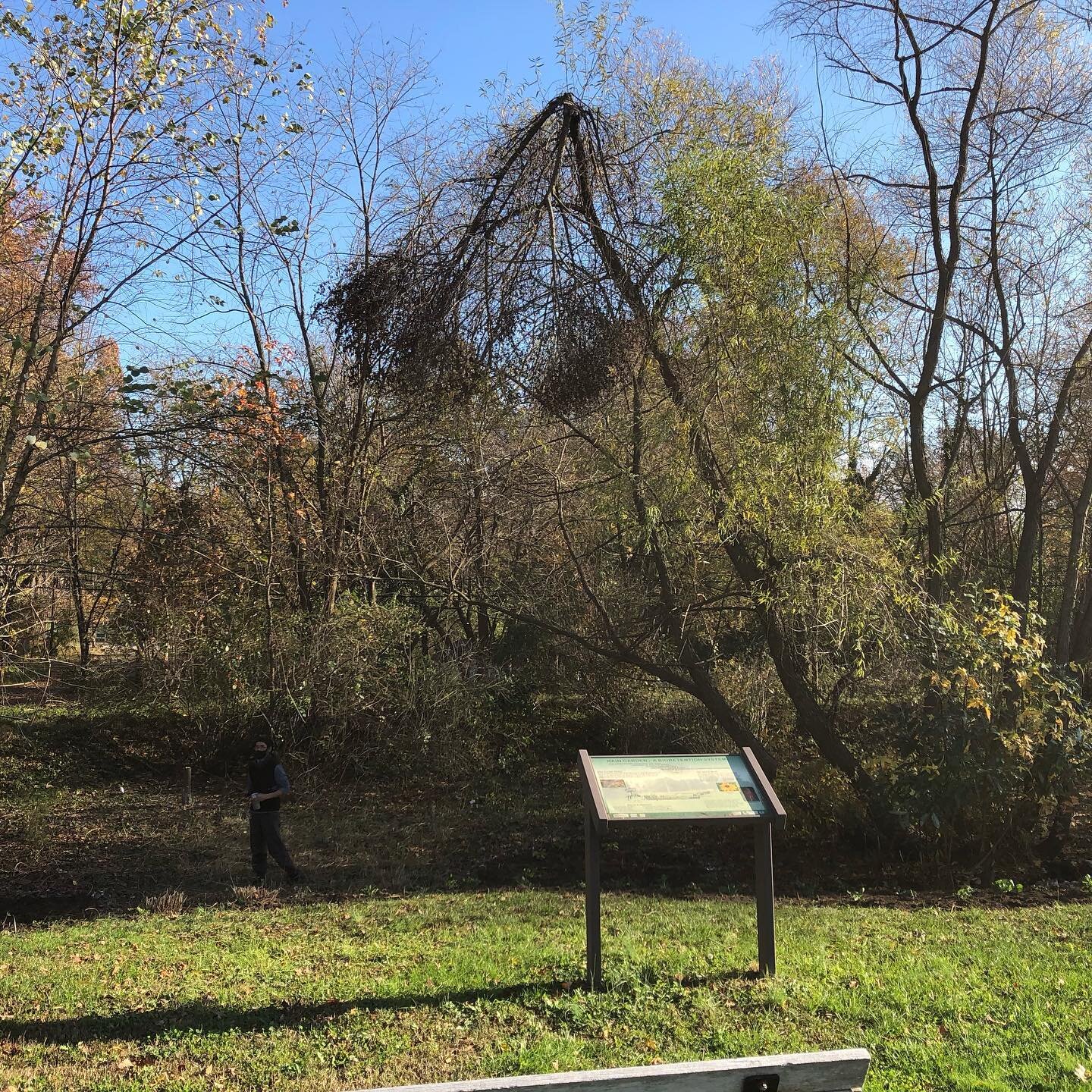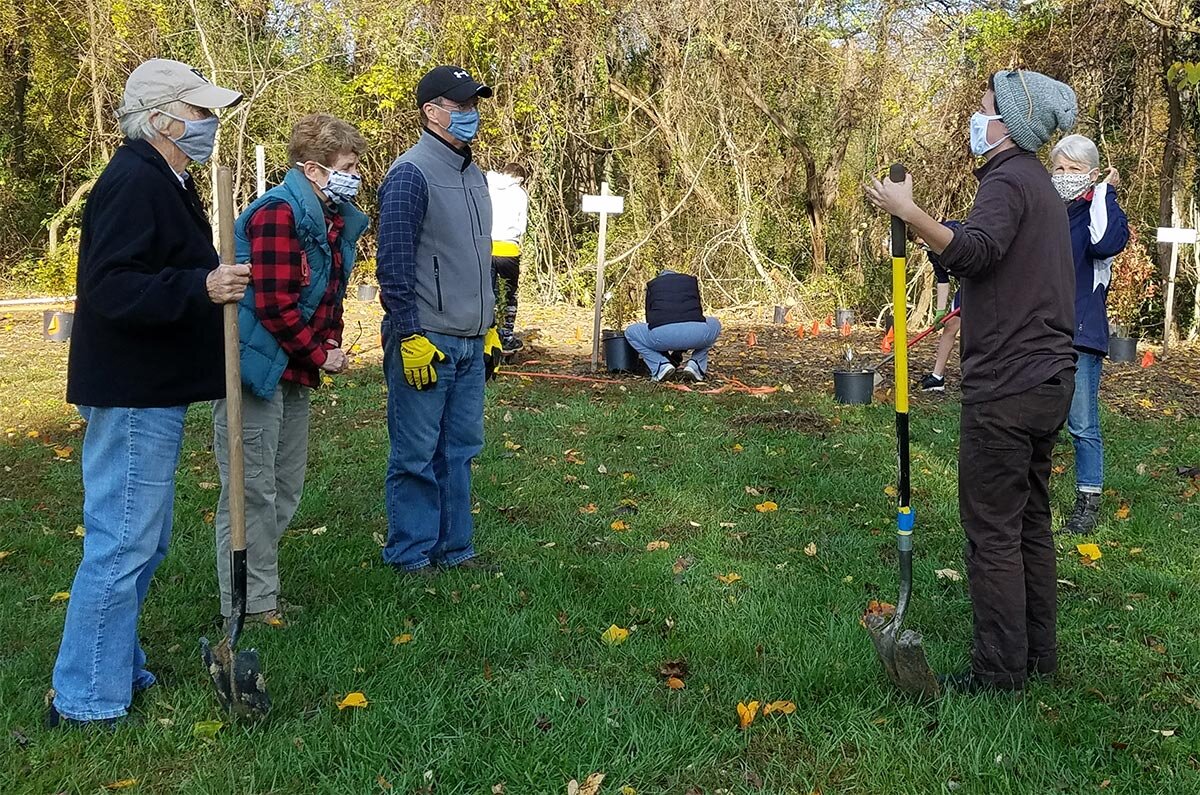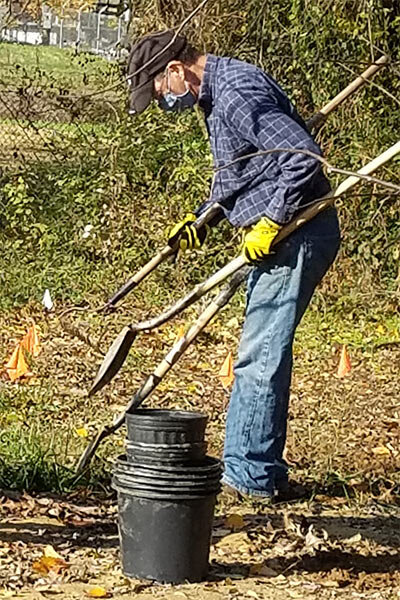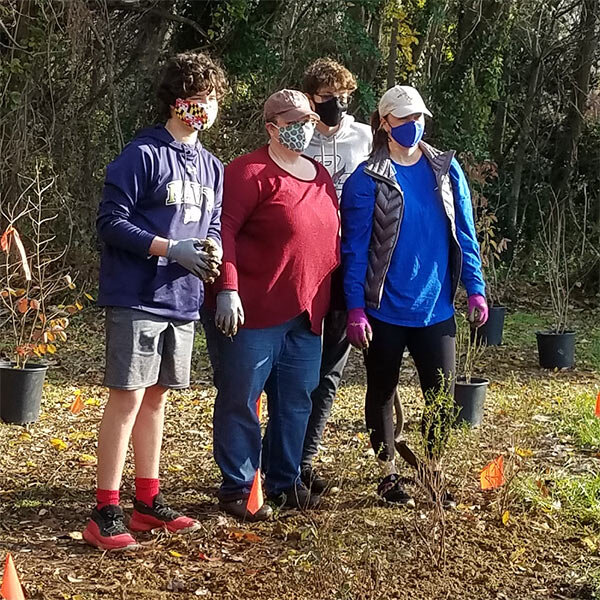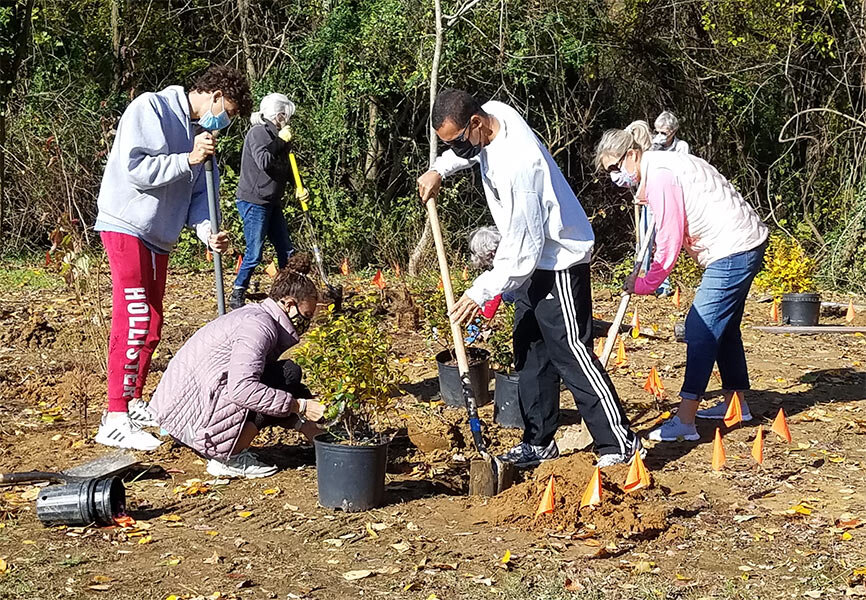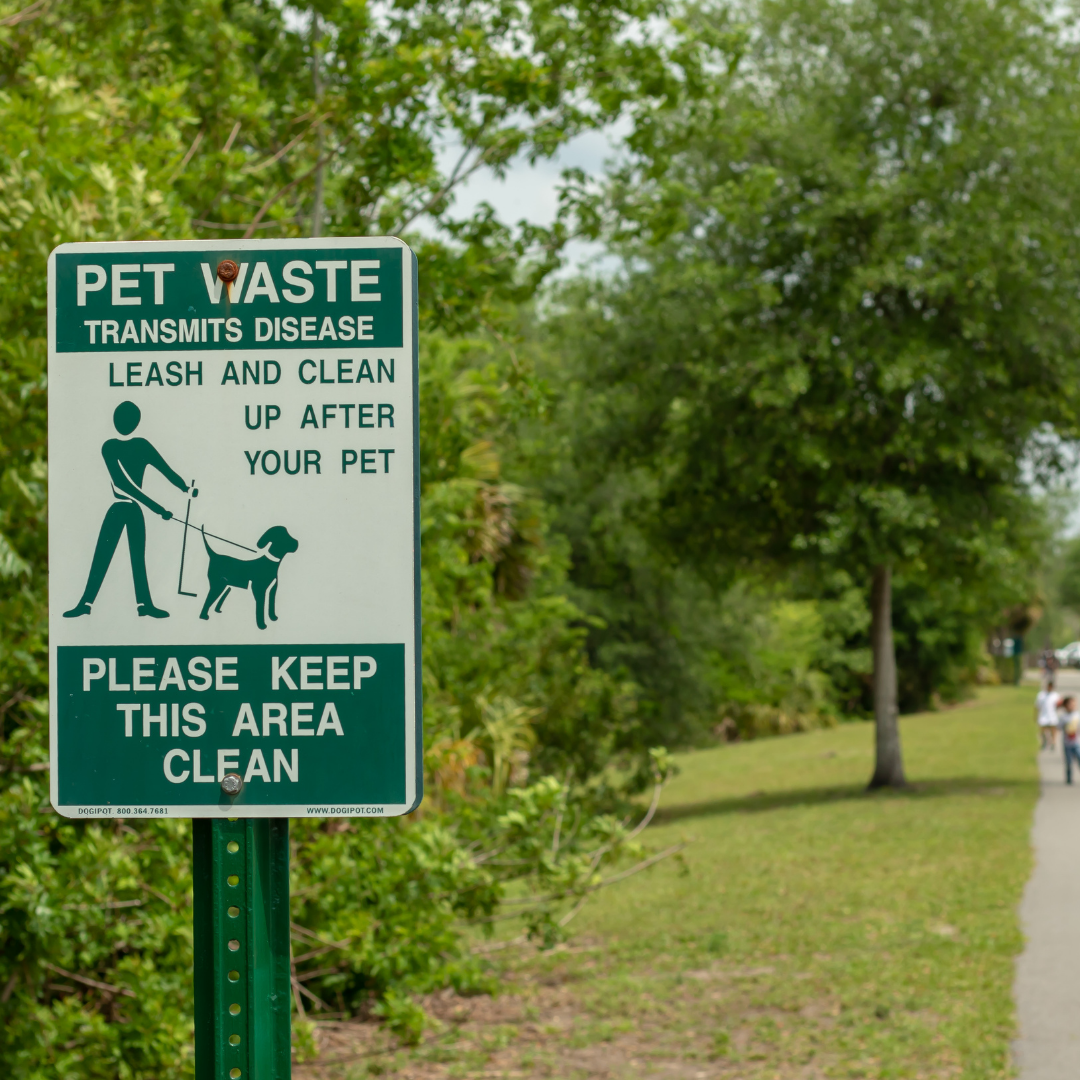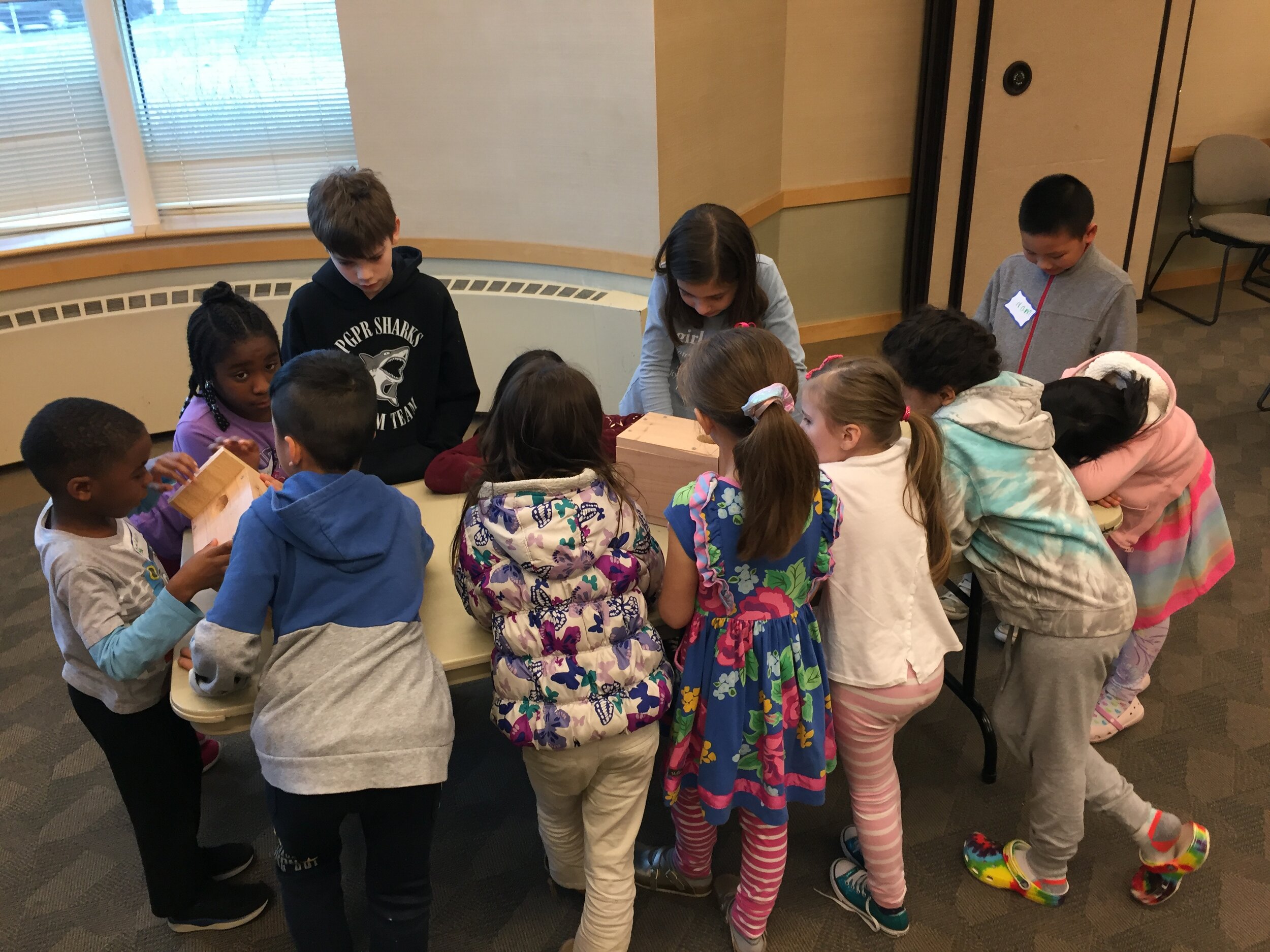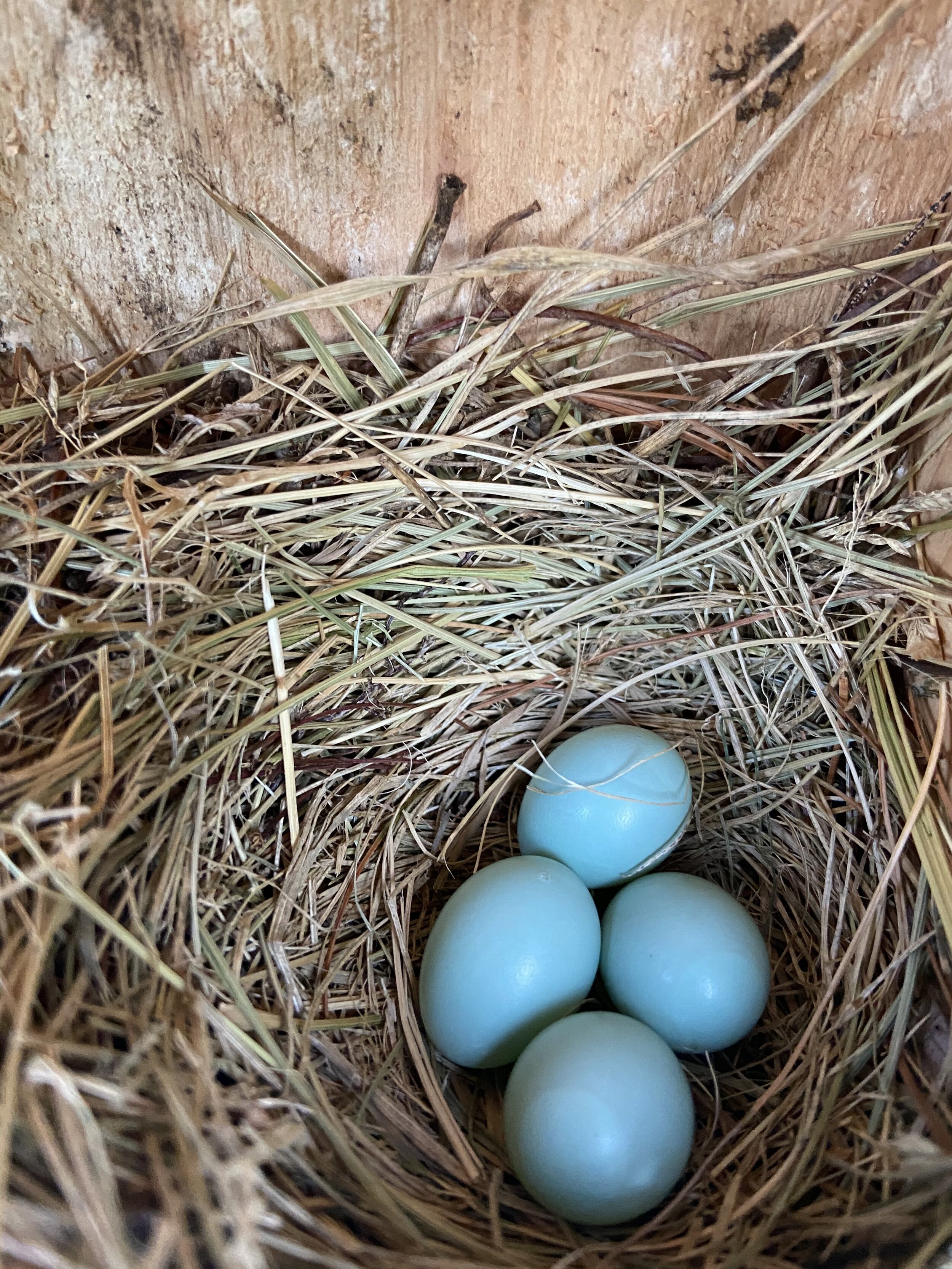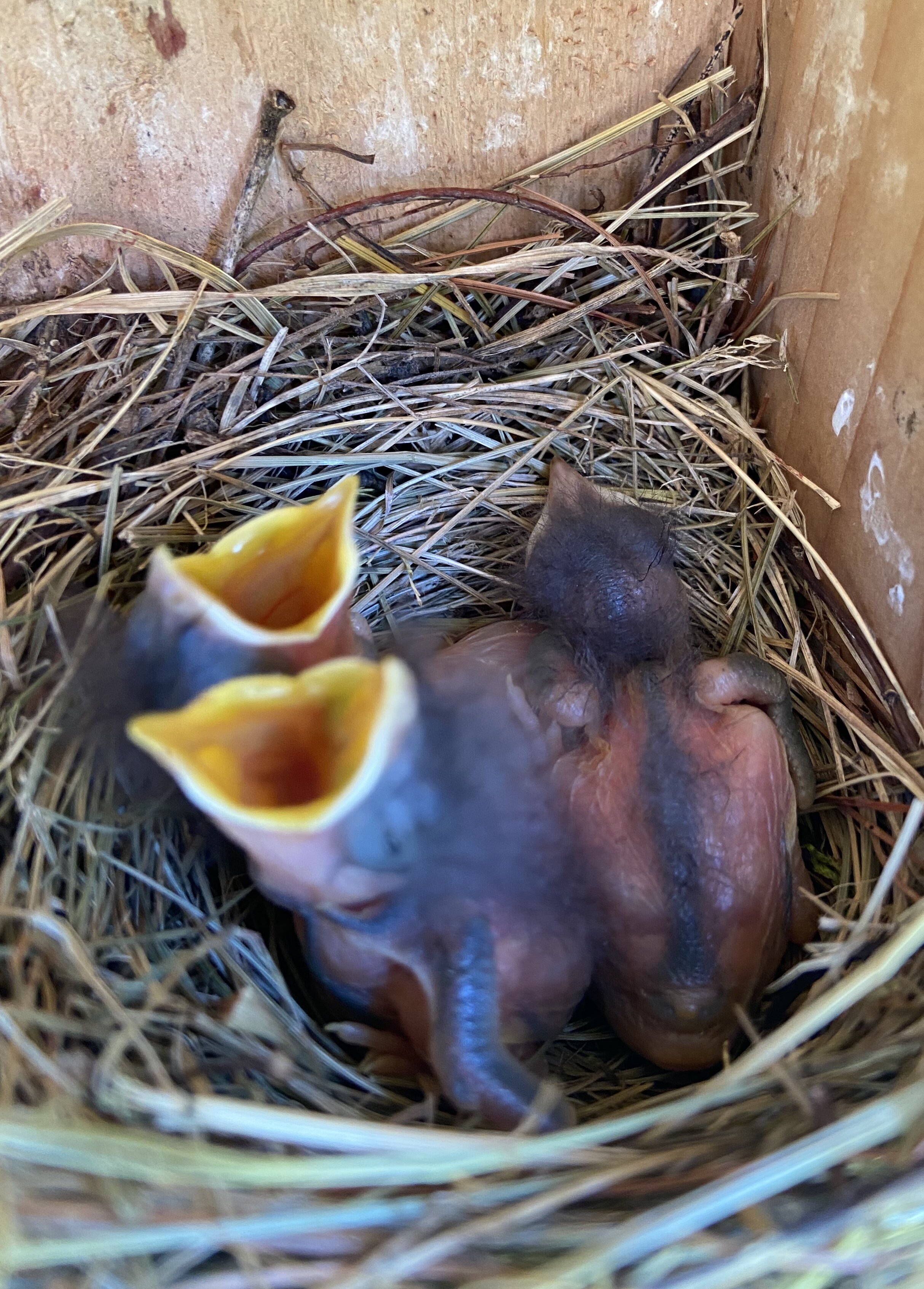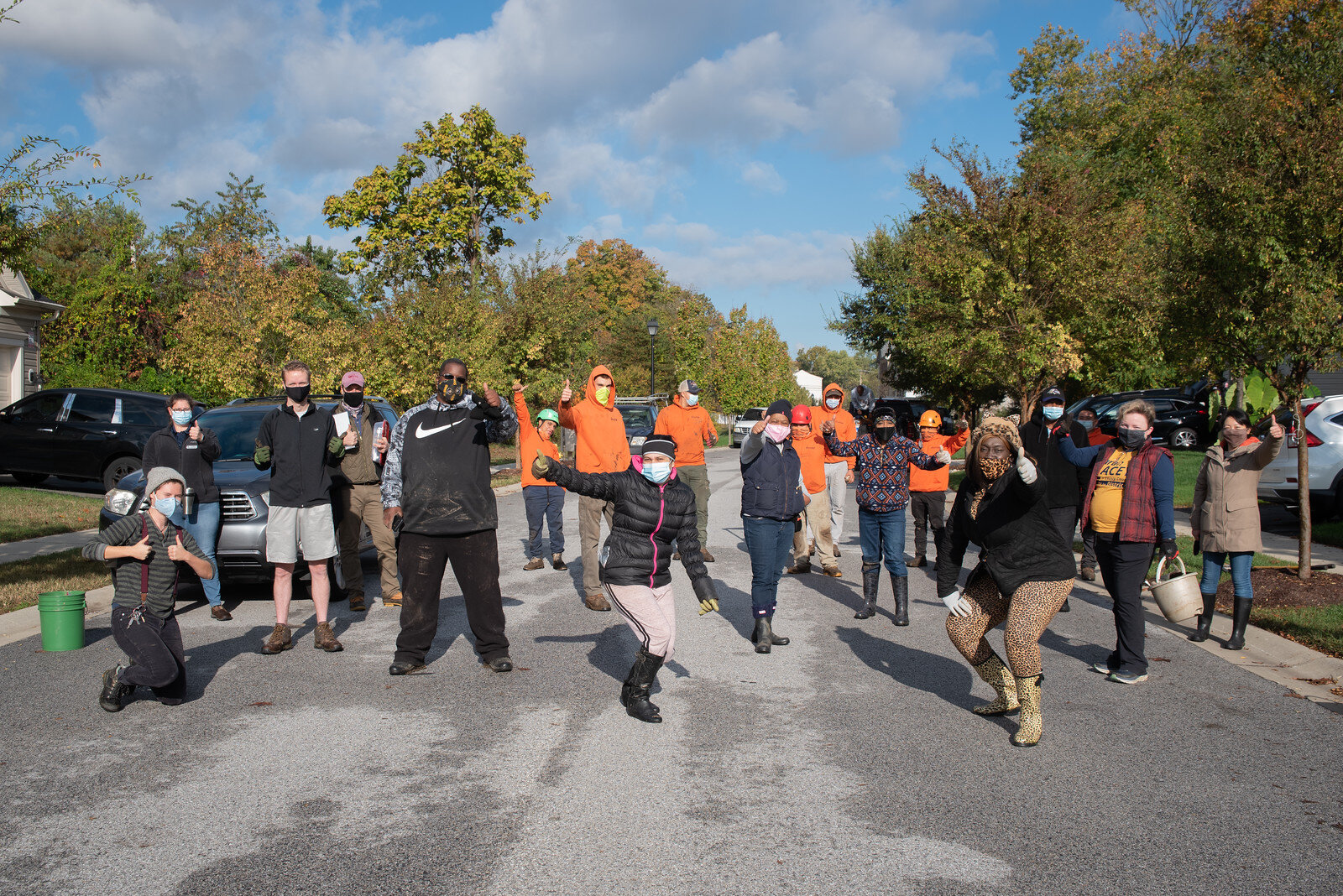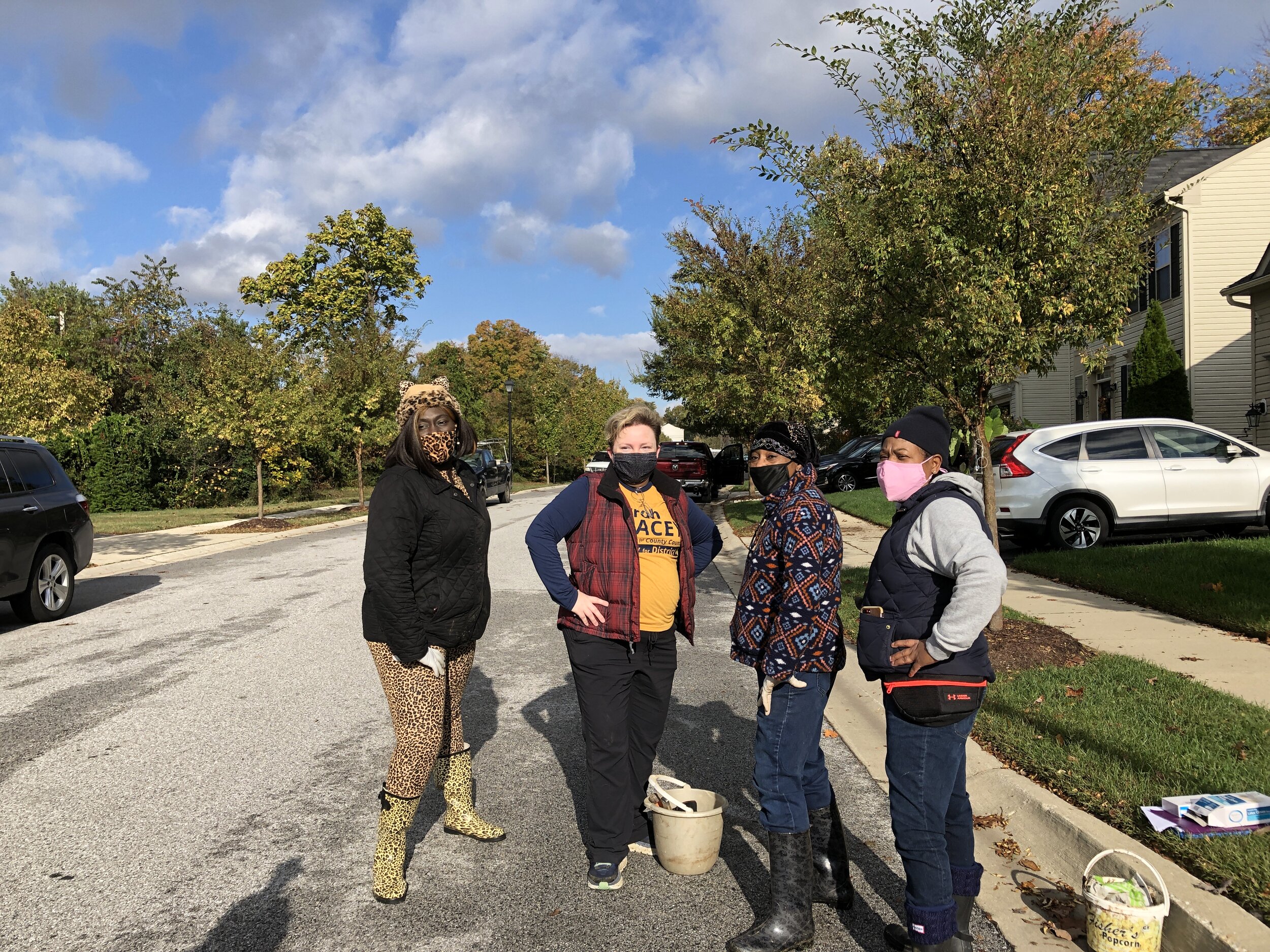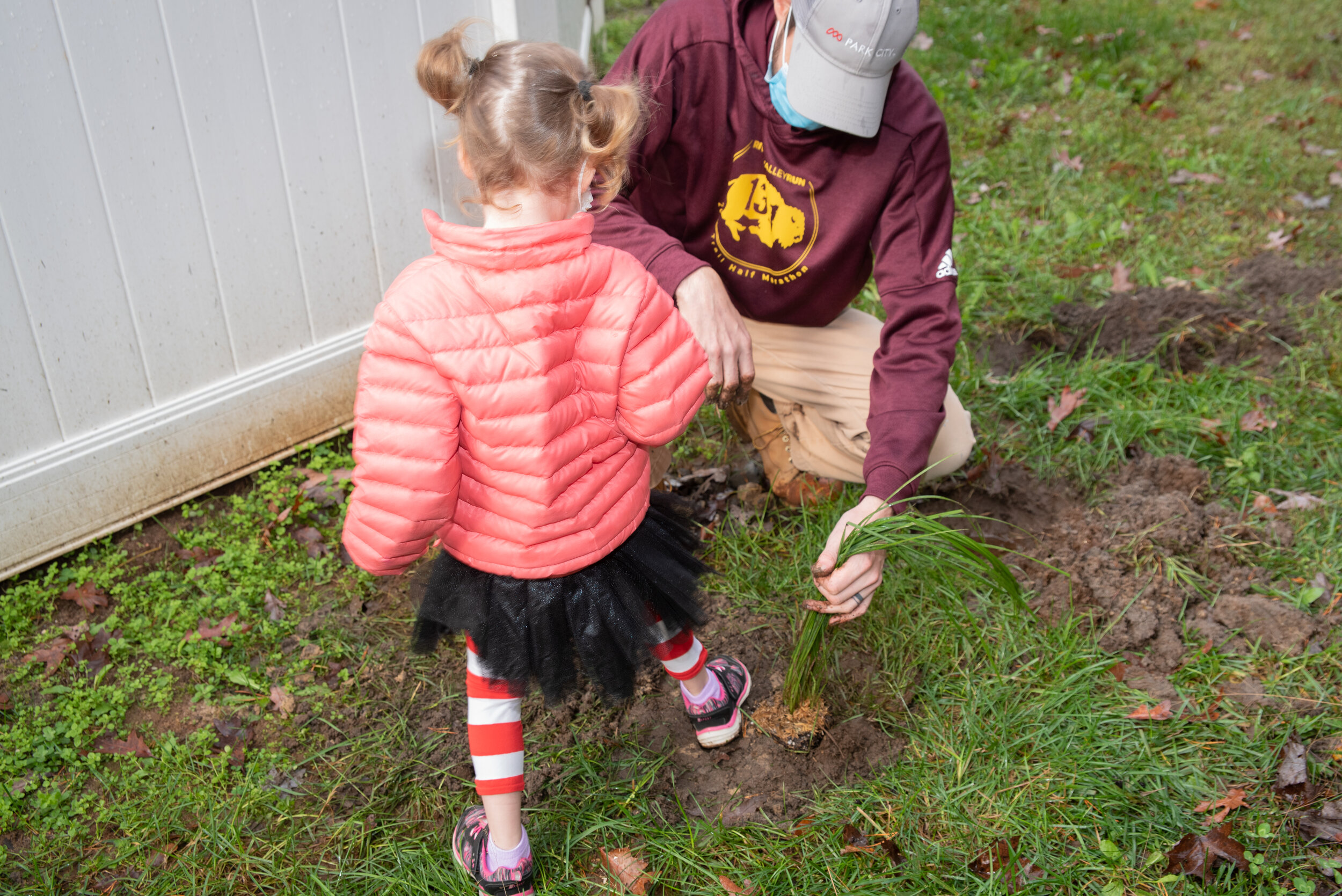Each year, Steward Candidates complete a capstone project as part of the Certification Course. From creating activities to engage students in environmental literacy to rehabbing raingardens, Class 12 Stewards made an impact on clean water throughout the county!
Jug Bay's Rain Garden Revamp
Steward Candidate Meghan Petenbrink completed her capstone project earlier this fall. Meghan and a small but mighty group of volunteers planted over 250 native perennials in a 750 sq ft rain garden at Jug Bay Wetlands Sanctuary!
Bringing new life to an old project
Class 12 Candidates Katrina Golladay and Jay Resnick collaborated to restore an abandoned bioretention project at the Eastport-Annapolis Library. Working with a crew of 16 volunteers, they filled nearly 180 13-gallon trash bags with invasive plants and litter before planting over 160 native perennials!
A Congregation Collaborates for clean Water
Together with 23 parish volunteers, Cathy Tengwall and Mary Smith planted 63 native shrubs at St. Andrew by the Bay. As part of the Creation Care Team, Cathy and Mary hope restoring the woodland edge will enable the parish to use the space for meditation and education.
Stormwater Success 201
Steve Miller, an experienced HOA Board President, created an advanced version of our Stormwater Success course as his capstone project. This free, three-part seminar was a brand-new resource for HOA leaders and property managers, building upon information presented in the Stormwater Success course. A dedicated group of about 15 County residents participated, now ready to navigate stormwater issues take action in their own neighborhoods!
Inspiring the next generation of Environmental Stewards
Martha Sykora connected with the Crofton Library Nature Explorers Club to teach students about the importance of birds in relation to the health of the environment. Focusing on bluebirds, Martha created activities to depict how the species is affected by the presence or absence of native plants and invasive plants, pollution from lawn products, and the benefits of conservation landscapes and trees.
Students were inspired to preserve or improve the preferred habitat for bluebirds, starting in their own backyards!
A Spooky Stormwater Solution in a Severn Subdivision
On Halloween, Rob Williams engaged his community of Millstone Village to remediate standing water issues in their neighborhood. By planting native perennials in a slow draining rain garden and nearby swale, the community will experience less standing water and fewer mosquitoes while beautifying the neighborhood!

